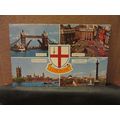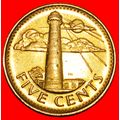Royalty - King Edward VIII as the Prince of Wales c.1930s real photo postcard
- Condition : Used
- Dispatch : 2 Days
- Brand : None
- ID# : 143196535
- Quantity : 1 item
- Views : 285
- Location : United Kingdom

- Seller : justthebook (+1703)
- Barcode : None
- Start : Sat 26 Sep 2015 10:20:53 (BST)
- Close : Run Until Sold
- Remain : Run Until Sold
More Listings from This Seller view all
Seller's Description
- Postcard
- Picture / Image: ""HRH the Prince of Wales"" - this was the later King Edward VIII who abdicated in 1936
- Publisher: none mentioned 'RX4' - real bromide photograph
- Postally used: no
- Stamp: n/a
- Postmark(s): n/a
- Sent to: n/a
- Notes / condition:
Please ask if you need any other information and I will do the best I can to answer.
Image may be low res for illustrative purposes - if you need a higher definition image then please contact me and I may be able to send one. No cards have been trimmed (unless stated).
------------------------------------------------
Postage & Packing:
Postage and packing charge should be showing for your location (contact if not sure).
No additional charges for more than one postcard. You can buy as many postcards from me as you like and you will just pay the fee above once. Please wait for combined invoice. (If buying postcards with other things such as books, please contact or wait for invoice before paying).
Payment Methods:
UK - PayPal, Cheque (from UK bank) or postal order
Outside UK: PayPal ONLY (unless otherwise stated) please. NO non-UK currency checks or money orders (sorry).
NOTE: All postcards are sent in brand new stiffened envelopes which I have bought for the task. These are specially made to protect postcards and you may be able to re-use them. In addition there are other costs to sending so the above charge is not just for the stamp!
I will give a full refund if you are not fully satisfied with the postcard.
----------------------------------------------
Text from the free encyclopedia WIKIPEDIA may appear below to give a little background information (internal links may not work) :
*************
Edward VIII (Edward Albert Christian George Andrew Patrick David; 23 June 1894 – 28 May 1972) was King of the United Kingdom and the Dominions of the British Empire, and Emperor of India, from 20 January 1936 until his abdication on 11 December 1936.
Edward was the eldest son of King George V and Queen Mary. He was created Prince of Wales on his sixteenth birthday, nine weeks after his father succeeded his own father, Edward VII, as king. As a young man, he served in the British Armed Forces during the First World War and undertook several overseas tours on behalf of his father.
Edward became king following his father's death on 20 January 1936. He showed impatience with court protocol and politicians were concerned by his apparent disregard for established constitutional conventions. Only months into his reign, he caused a constitutional crisis by proposing marriage to the American socialite Wallis Simpson, who had divorced her first husband and was seeking a divorce from her second. The prime ministers of the United Kingdom and the Dominions opposed the marriage, arguing that the people would never accept a divorced woman with two living ex-husbands as queen consort. Additionally, such a marriage would have conflicted with Edward's status as the titular head of the Church of England, which at the time opposed the remarriage of divorced people if their former spouses were still alive. Edward knew that the British government, led by Prime Minister Stanley Baldwin, would resign if the marriage went ahead, which could have forced a general election and would ruin his status as a politically neutral constitutional monarch. Choosing not to end his relationship with Simpson, Edward abdicated. He was succeeded by his younger brother Albert, who chose the regnal name George VI. With a reign of 326 days, Edward was one of the shortest-reigning monarchs in British history.
After his abdication, he was created Duke of Windsor. He married Simpson in France on 3 June 1937, after her second divorce became final. Later that year, the couple toured Germany. During the Second World War, he was at first stationed with the British Military Mission to France but, after private accusations that he held Nazi sympathies, he was assigned to the Bahamas as the islands' governor. After the war, he was never given another official appointment and spent the remainder of his life in retirement in France.
Edward VIII was born on 23 June 1894 at White Lodge, Richmond Park, on the outskirts of London, during the reign of his great-grandmother Queen Victoria.[1] He was the eldest son of the Duke and Duchess of York (later King George V and Queen Mary). His father was the son of the Prince and Princess of Wales (later King Edward VII and Queen Alexandra). His mother was the eldest daughter of the Duke and Duchess of Teck (Francis and Mary Adelaide). As a great-grandson of the monarch in the male line, Edward was styled His Highness Prince Edward of York at birth.
He was baptised Edward Albert Christian George Andrew Patrick David in the Green Drawing Room of White Lodge on 16 July 1894 by Edward White Benson, Archbishop of Canterbury.[N 1][2] The names were chosen in honour of Edward's late uncle, who was known to his family as ""Eddy"" or Edward, and his great-grandfather King Christian IX of Denmark. The name Albert was included at the behest of Queen Victoria, and his last four names – George, Andrew, Patrick and David – came from the Patron Saints of England, Scotland, Ireland and Wales.[3] He was always known to his family and close friends by his last given name, David.[4]
Like other upper-class children of the time, Edward and his younger siblings were brought up by nannies rather than directly by their parents. One of his early nannies abused Edward by pinching him before he was due to be presented to his parents. His subsequent crying and wailing would lead the Duke and Duchess to send Edward and the nanny away.[5] The nanny was subsequently discharged.
Edward's father, though a harsh disciplinarian,[6] was demonstrably affectionate,[7] and his mother displayed a frolicsome side with her children that belied her austere public image. She was amused by the children making tadpoles on toast for their French master,[8] and encouraged them to confide in her.[9]
Initially Edward was tutored at home by Helen Bricka. When his parents travelled the British Empire for almost nine months following the death of Queen Victoria in 1901, young Edward and his siblings stayed in Britain with their grandparents, Queen Alexandra and King Edward VII, who showered their grandchildren with affection. Upon his parents' return, Edward was placed under the care of two men, Frederick Finch and Henry Hansell, who virtually brought up Edward and his brothers and sister for their remaining nursery years.[10]
Edward was kept under the strict tutorship of Hansell until nearly 13; he was taught German and French by private tutors.[11] Edward took the examination to enter Osborne Naval College, and began there in 1907. Hansell had wanted Edward to enter school earlier, but his father disagreed.[12] Following two years at Osborne College, which he did not enjoy, Edward moved on to the Royal Naval College at Dartmouth. A course of two years followed by entry into the Royal Navy was planned. A bout of mumps may have left him sterile. When his father ascended the throne on 6 May 1910 following the death of Edward VII, Edward automatically became Duke of Cornwall and Duke of Rothesay and he was created Prince of Wales a month later on 23 June 1910, his 16th birthday. Preparations began in earnest for his future duties as king. He was withdrawn from his naval course before his formal graduation, served as midshipman for three months aboard the battleship Hindustan, then immediately entered Magdalen College, Oxford, for which, in the opinion of his biographers, he was underprepared intellectually. A keen horseman, he learned how to play polo with the university club.[13] He left Oxford after eight terms without any academic qualifications.[14]
Edward was officially invested as Prince of Wales in a special ceremony at Caernarvon Castle on 13 July 1911.[15] The investiture took place in Wales, at the instigation of the Welsh politician David Lloyd George, Constable of the Castle and Chancellor of the Exchequer in the Liberal government.[16] Lloyd George invented a rather fanciful ceremony in the style of a Welsh pageant, and coached Edward to speak a few words in Welsh.[17]
When the First World War (1914–18) broke out, Edward had reached the minimum age for active service and was keen to participate.[18] He had joined the Grenadier Guards in June 1914, and although Edward was willing to serve on the front lines, Secretary of State for War Lord Kitchener refused to allow it, citing the immense harm that would occur if the heir to the throne were captured by the enemy.[19]
Despite this, Edward witnessed trench warfare first-hand and attempted to visit the front line as often as he could, for which he was awarded the Military Cross in 1916. His role in the war, although limited, made him popular among veterans of the conflict.[20] Edward undertook his first military flight in 1918 and later gained a pilot's licence.[21]
Throughout the 1920s, Edward, as Prince of Wales, represented his father, King George V, at home and abroad on many occasions. He took a particular interest in science and in 1926 was president of the British Association for the Advancement of Science when his alma mater, Oxford University, hosted the society's annual general meeting.[22] He also visited the poverty–stricken areas of the country,[23] and undertook 16 tours to various parts of the Empire between 1919 and 1935. On a tour of Canada in 1919 he acquired the Bedingfield ranch, near Pekisko, Alberta,[24] and in 1924 he donated the Prince of Wales Trophy to the National Hockey League.[25] From January to April 1931, he and his brother, Prince George, travelled 18,000 miles on a tour of South America, voyaging out on the ocean liner SS Oropesa[26] and returning via Paris and an Imperial Airways flight from Paris–Le Bourget Airport that landed specially in Windsor Great Park.[27][28]
The prince's rank, travels, good looks, and unmarried status gained him much public attention, and at the height of his popularity, he was the most photographed celebrity of his time.[29]
His attitudes towards many of the Empire's subjects and various foreign peoples, both during his time as Prince of Wales and later as Duke of Windsor, were little commented upon at the time but have soured his reputation subsequently.[30] In 1920 he wrote of Indigenous Australians, ""they are the most revolting form of living creatures I've ever seen!! They are the lowest known form of human beings & are the nearest thing to monkeys.""[31]
type=real photographic (rp)
subject=royal figure-men
period=inter-war (1918-39)
postage condition=unposted
number of items=single
size=standard (140x89mm)
Listing Information
| Listing Type | Gallery Listing |
| Listing ID# | 143196535 |
| Start Time | Sat 26 Sep 2015 10:20:53 (BST) |
| Close Time | Run Until Sold |
| Starting Bid | Fixed Price (no bidding) |
| Item Condition | Used |
| Bids | 0 |
| Views | 285 |
| Dispatch Time | 2 Days |
| Quantity | 1 |
| Location | United Kingdom |
| Auto Extend | No |




 for 1 item(s)
for 1 item(s)














